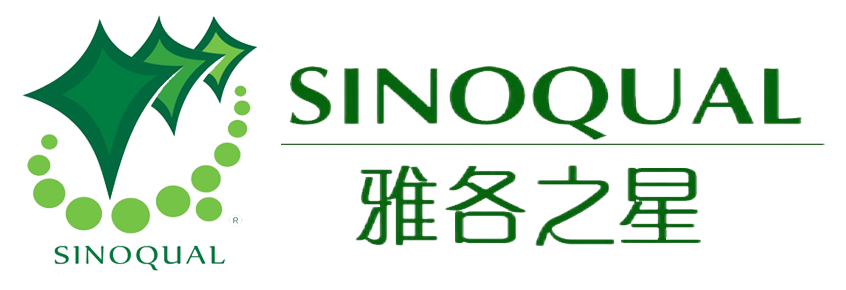The global beauty industry is undergoing a transformation as consumers increasingly demand products that demonstrate transparency, ethical sourcing, and ingredient purity...
Kosher Enzyme Basics (Part 2): Where Do Enzymes Come From?
2025-05-15
What are the sources of enzymes?
Enzymes for the food industry come from three main sources: animals, plants, and microorganisms. Currently, there are three main types of animal-derived enzymes for food use. Rennet is extracted from the cow's fourth stomach and is rich in enzymes such as chymosin and pepsin. These enzymes, all proteases, help milk coagulate into cheese. Lipase partially breaks down fat, turning oil into butter; it also accelerates the aging of cheese (enzyme-modified cheese). The use of rennet is discussed in the Jewish Code and has sparked considerable debate. Historically, only rennet from kosher slaughtered cattle was considered kosher. Authoritative rabbis have thoroughly debated its use, based on Jewish law regarding the separation of meat and milk, as there was previously considerable debate regarding the extraction of rennet from non-kosher animals. Similarly, lipase from non-kosher animals is also prohibited.
Another enzyme derived from animals and used in the food industry is pancreatin, which is derived from dehydrated pancreatic tissue, typically from pigs. Pancreatin contains a variety of proteases that denature proteins for easier digestion. Another enzyme with the same function is trypsin. Mead Johnson, Abbott, and Nestlé all use pancreatic tissue and its derivatives in their infant formulas to break down proteins and facilitate digestion and absorption in children. These ingredients are also found in many health foods claimed to boost muscle mass.
Note: Although these infant formulas are not kosher certified, they contain very low levels of non-kosher enzymes. If a doctor recommends the use of such products, a rabbi should be consulted.
Currently, there are three main plant-derived proteases in commercial use: papain from the papaya plant, bromelain from the pineapple plant, and ficin from the fig. Papain and bromelain are primarily used as meat tenderizers, while ficin's use is limited due to its more active hydrolytic activity. Additionally, barley amylase is used in the production of maltose syrup.
The recent surge in interest in enzymes is primarily driven by a third source: microorganisms. Microorganisms are cultivated on a nutrient medium, where they produce a variety of enzymes to complete their normal metabolism—a process commonly known as fermentation. For example, in order to grow on starch, yeast must first secrete a series of amylases to convert the starch into sugars that it can digest. If microbial growth can be controlled and sufficient enzymes secreted, collected, and applied elsewhere, this is the core technology behind enzyme production through fermentation.
The microorganisms used in fermentation (bacteria, fungi, and yeast) occur naturally. Until recently, enzyme production using these microorganisms was limited to identifying and culturing those capable of producing large quantities of a specific enzyme under suitable conditions. Over the years, many such microorganisms have been identified and cultured, some of which are natural mutants of others. Variants were found to be more potent in enzyme production, and these were subsequently isolated and multiplied. New mutants can also be generated by manipulating the microorganism's chemical or physical environment. Enzyme manufacturers now maintain libraries of these microorganisms and are constantly working to improve their performance.
A more recent development is due to genetic recombinant technology, commonly known as cloning. One approach involves identifying the genetic code that determines a microorganism's ability to produce a desired enzyme and then repeatedly replicating that code within that organism. This allows the resulting organism to produce enzymes many times more efficiently than typical organisms. Furthermore, scientists have now discovered that by inserting genetic code from one organism into a completely different microorganism found in nature, that organism can produce enzymes (or other chemicals) that it otherwise wouldn't be able to synthesize. The resulting organism, unlike anything found in nature, possesses unique properties.
A prime example of these two methods is "microbial rennet." As mentioned earlier, rennet is a protease derived from cow stomachs. In the food industry, it's primarily used to break down protein molecules in milk, causing it to coagulate into cheese. Due to the limited availability of animal-derived rennet, scientists have sought a protease with similar functionality. They have discovered several microorganisms that, under suitable conditions, can produce proteases similar (but not identical) to rennet. These are the "microbial rennets" we use to make kosher cheese. Commonly used microorganisms include Mucor mehei, Mucor pussilus lindt, and Endothia parastica, and the corresponding enzymes are called "Fromase," "Emporase," and "SureCurd." A problem with these products is that their chemical properties are not identical to rennet, resulting in slightly different functions. Furthermore, they produce other enzymes that can impart off-flavors to cheese. Several companies are now producing genetically modified microorganisms capable of producing genuine rennet, such as Chymax, derived from genetically modified Escherichia coli; Chymogen, derived from genetically modified Aspergillus niger; and Maxiren, derived from genetically modified yeast. While the jury is still out on the merits of these genetically engineered rennets compared to traditional microbial rennets, the implications are significant.
